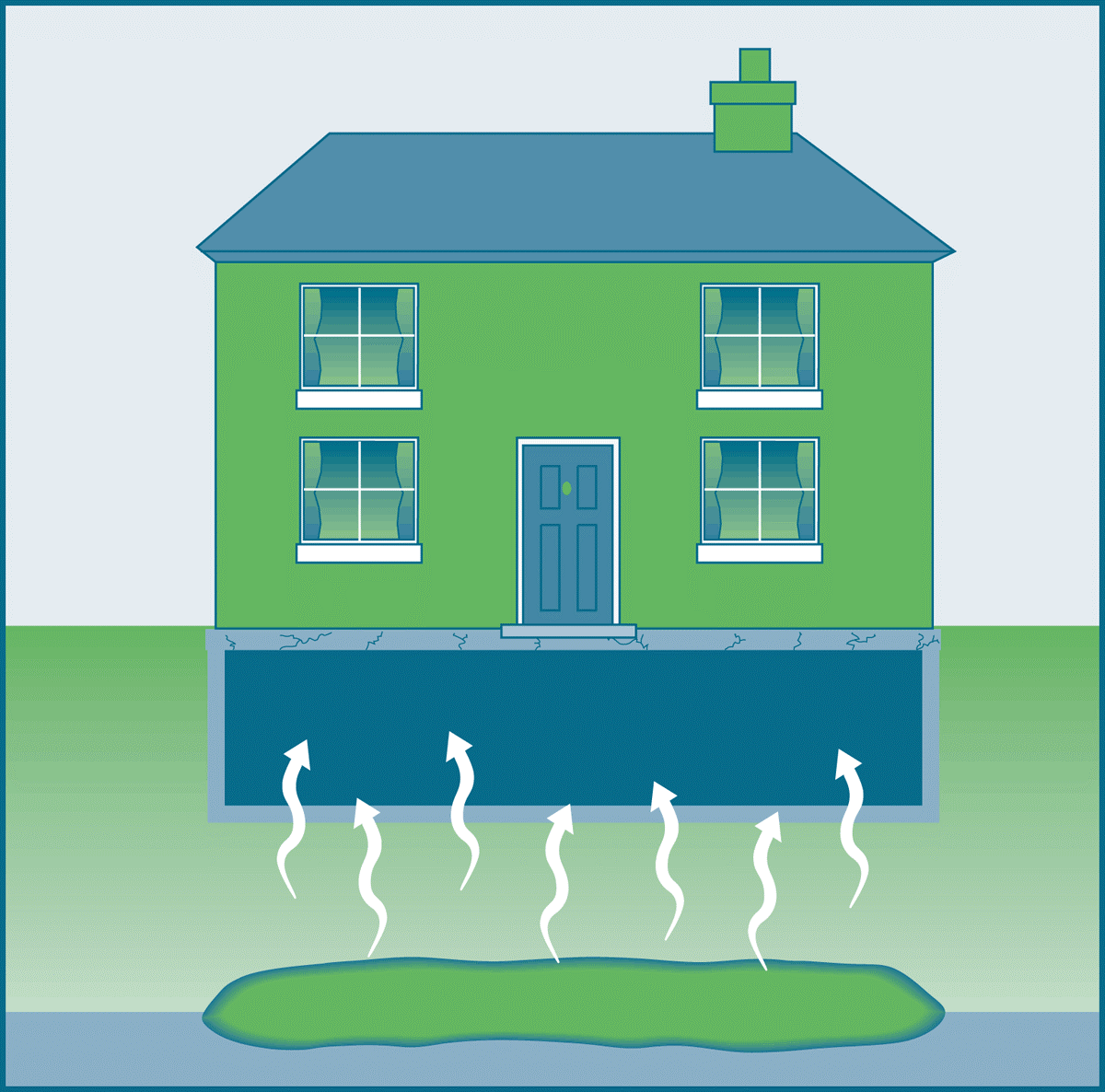How much soil gas moves into your home will depend on the type and wetness of the soil, the air conditioning and heating settings in the house, the time you keep the windows open, the type and condition of the floor (cracks in the concrete, holes for utilities), and other factors.
Sometimes solvents or gasoline are found in the soil or groundwater. These are volatile organic compounds (VOCs). They evaporate and become part of the soil gas. Examples of common VOCs in soil gas include dry cleaning solvents like tetrachloroethylene or "PCE", industrial solvents like trichloroethylene or "TCE", or paint thinners like acetone.

Find out more about Vapor Intrusion
Vapor Intrusion can affect your health
Health effects of vapor intrusion may include eye and respiratory irritation, headaches or nausea. However, these symptoms are commonly associated with other conditions. Health effects depend on:
- How toxic the VOC is
- What amount of the VOC you were exposed to
- How often were you exposed
- And your general state of health at the time
Some contaminants are more toxic to some populations. Children, older adults, pregnant and nursing women, and people with existing chronic diseases may be more vulnerable to some contaminants.
More information on common contaminants in soil gas
Factsheet on Benzene (in English and Spanish):
Factsheet on Tetrachloroethylene or PCE (in English and Spanish):
Factsheet on Trichloroethylene or TCE (in English and Spanish):
How do you know if there is vapor intrusion in your home?
When a government agency identifies a contaminated site, scientists assess the risk of Vapor Intrusion in nearby communities. First, they gather information about the type, amount, and location of contamination in soil gas, soil, groundwater, and indoor air. If this information shows that vapor intrusion is a concern, scientists collect additional samples to confirm it. The agencies doing the investigation will pay and conduct the test. People do not typically conduct the tests themselves.
The federal Agency for Toxic Substances and Disease Registry (ATSDR) has a factsheet on "Investigating Vapor Intrusion" (in English and Spanish):